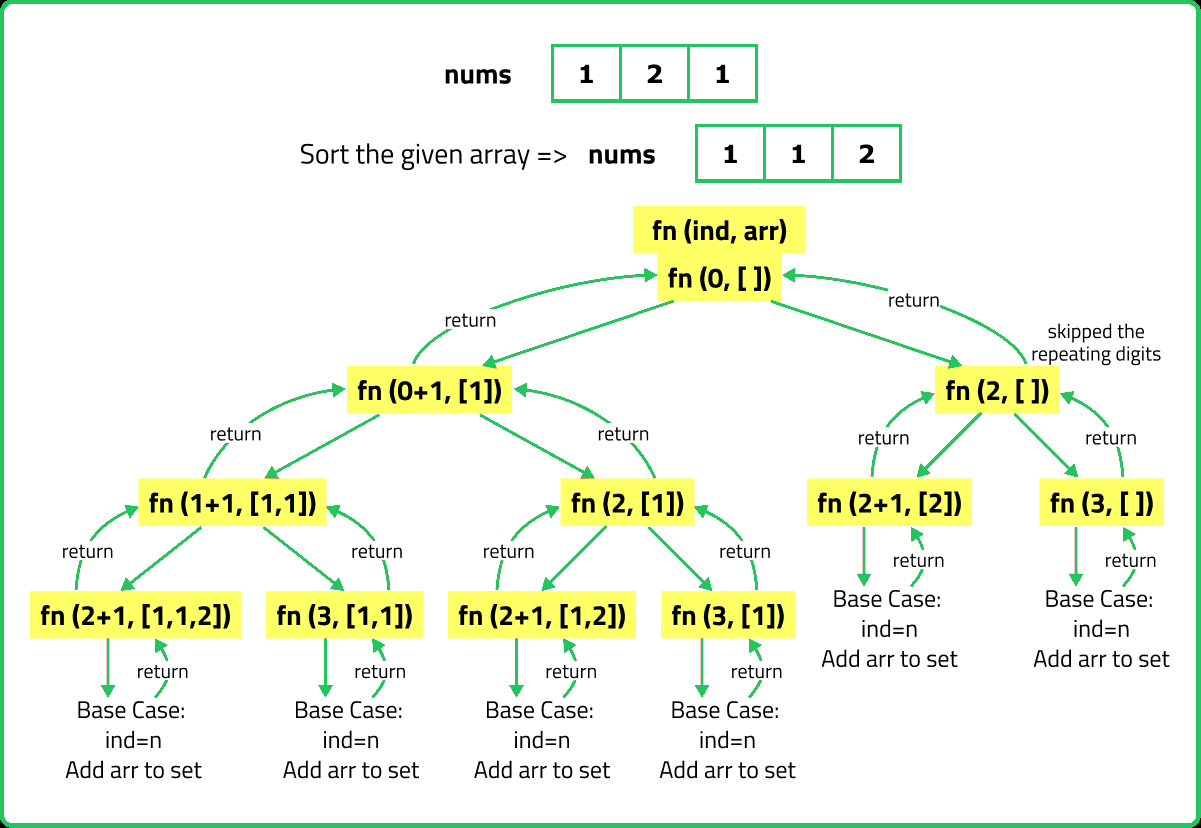Subsets II
Recursion
FAQs (Medium)
Medium
Given an integer array nums, which can have duplicate entries, provide the power set. Duplicate subsets cannot exist in the solution set. Return the answer in any sequence.
Examples:
Input : nums = [1, 2, 2]
Output : [ [ ] , [1] , [1, 2] , [1, 2, 2] , [2] , [2, 2] ]
Input : nums = [1, 2]
Output : [ [ ], [1] , [2] , [1, 2] ]
Input : nums = [1, 3, 3]
Constraints
- 1 <= nums.length <= 10
- -10 <= nums[i] <= 10
Hints
- Sort the input array nums to group duplicate elements together. While generating subsets, skip duplicate elements to avoid generating the same subset multiple times
- Start with an empty subset. For each element in nums, add it to all existing subsets. To handle duplicates, only extend subsets created in the previous iteration for duplicate elements.
Company Tags
Goldman Sachs
OYO Rooms
Optum
Chewy
Zomato
Etsy
Salesforce
Rockstar Games
Flipkart
Stripe
Electronic Arts
Uber
Deloitte
Rakuten
Freshworks
Zoho
Intel
Oracle
Bungie
Walmart
Roblox
Zynga
HCL Technologies
AMD
Databricks
Google
Microsoft
Amazon
Meta
Apple
Netflix
Adobe
